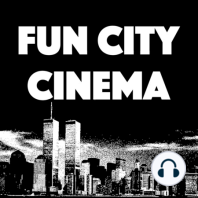77 min listen
Bonus Time: Born to Win
FromFun City Cinema
ratings:
Length:
17 minutes
Released:
Apr 18, 2022
Format:
Podcast episode
Description
Heads up: Jason and Mike were lucky enough to contribute an audio commentary to Fun City Editions’ new Blu-ray of “Born to Win,” one of the great unsung gems of early ‘70s fun city cinema. This seriocomic drama from 1971, directed by Ivan Passer (“Cutter’s Way”), tells the story of a high-class hairdresser turned low-rung junkie. George Segal stars, alongside Karen Black, Paula Prentiss, a young Hector Elizondo, and an even younger Robert De Niro.
In this bonus episode, we’ll tell you a bit about the movie and our experience doing the commentary; we’ll also play you a brief excerpt from it.
And you can order your copy now, via Vinegar Syndrome: https://vinegarsyndrome.com/collections/frontpage-partner-labels/products/born-to-win-fun-city-editions (https://vinegarsyndrome.com/collections/frontpage-partner-labels/products/born-to-win-fun-city-editions)
Thanks for listening!
In this bonus episode, we’ll tell you a bit about the movie and our experience doing the commentary; we’ll also play you a brief excerpt from it.
And you can order your copy now, via Vinegar Syndrome: https://vinegarsyndrome.com/collections/frontpage-partner-labels/products/born-to-win-fun-city-editions (https://vinegarsyndrome.com/collections/frontpage-partner-labels/products/born-to-win-fun-city-editions)
Thanks for listening!
Released:
Apr 18, 2022
Format:
Podcast episode
Titles in the series (17)
Fight The Power by Fun City Cinema
